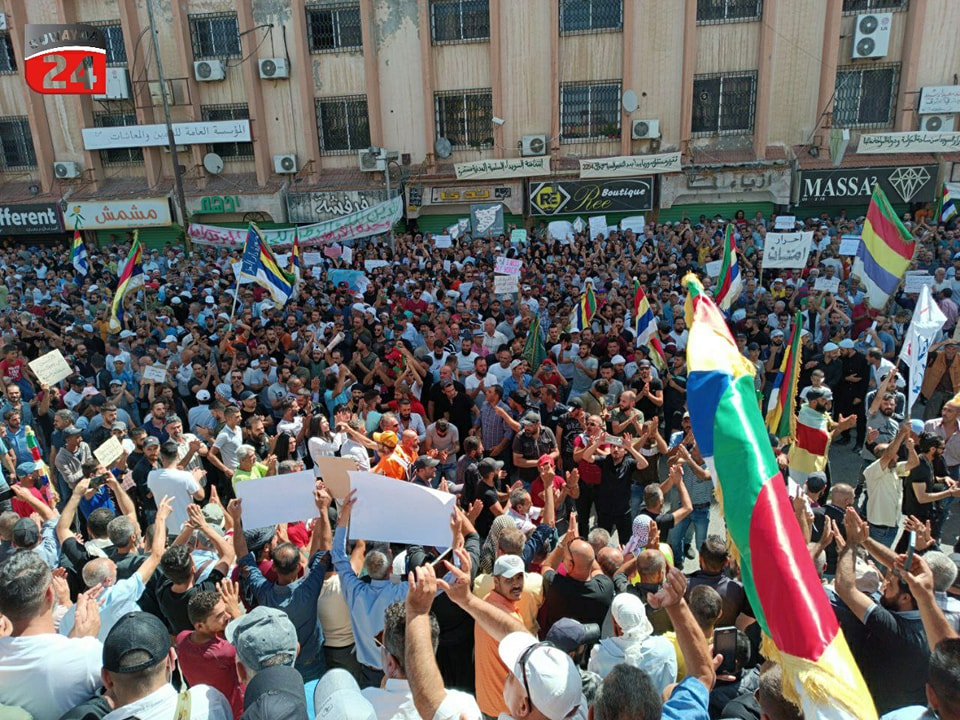The Syrian situation has undergone a significant transformation, evolving from a national project seeking political change and the establishment of a democratic state with rights and freedoms for its citizens. Over time, international and regional interests have become entangled in Syria, resulting in devastating consequences for its people, especially its youth and children. It’s crucial to examine the factors that fueled the Syrian national project’s initial momentum and contrast them with the weaknesses and external interference that have eroded its progress.
In 2011, peaceful demonstrations erupted across Syria, yielding positive local outcomes for the Syrian national project. These demonstrations were instrumental in prompting the Arab League to take action, including relocating its seat from the Syrian regime and advocating for substantial changes in Syria’s power structure. This culminated in the 2012 UN Resolution Geneva 1, which called for the establishment of a governing body with full authority to oversee the country’s affairs. These developments marked a radical departure from the existing system.
However, as Syria shifted toward militarization and violence escalated, with Iranian sectarian militias becoming increasingly involved, the national project faced challenges. The rise of extremist and terrorist forces further complicated matters, sidelining the political and civil aspects of the Syrian revolution and opposition. Multiple external actors, including Iran, Arab nations, Turkey, and the United States, supported various Syrian political parties and factions, leading to political and military competition and conflicts.
European MP Phones Sheikh Hijri, Confirms New European Syria Strategy
In 2015, Russia’s intervention turned the Syrian conflict into a well-defined international struggle, led by Russia and supported by Iranian militias and the Syrian regime’s army. Meanwhile, NATO took on the role of combating ISIS while supporting Kurdish SDF militias. This complex web of foreign involvement led to the formulation of Security Council Resolution 2254 in 2015, which shifted the focus from establishing a governing body with full authority to a national government guiding a transitional phase.
The national project gradually lost its strength and effectiveness, and by 2018, most Syrian cities had been evacuated. Russia and its allies were isolated militarily, with Turkey exerting control over Idleb and northern Aleppo, and the east of the Euphrates under the semi-autonomous SDF administration with American and NATO backing. While this reduced the intensity of the conflict, it also hindered the activation of international resolutions due to the loss of a military counterbalance to the Russian alliance. Russia could now dictate negotiation terms from a position of military strength without fully adhering to Resolution 2254. Attempts to give a political veneer to its military victory through processes like Astana and Sochi have been largely unsuccessful.
In summary, the strengths of the Syrian national project are evident in peaceful civil demonstrations, Arab and international support for a political solution, and a reference to internal Syrian consensus. Weaknesses manifest in militarization, competing regional and international interests, and a lack of unity among Syrian political and military factions.
Today, the ongoing uprising in Suweida and southern Syria presents an opportunity to revitalize the national project. Peaceful demonstrations, international political engagement, and Arab initiatives indicate a critical juncture in resolving the Syrian crisis. As the Syrian issue has become highly internationalized, it’s essential to consider the evolving situation in Europe, particularly the Russian-Ukrainian conflict. Russia’s desire to reduce its military commitment in Syria may create opportunities for political negotiations. The peaceful Suweida movement, distinct from terrorism and separatism, can rally support for the implementation of UN resolutions and the Arab League initiative.
In conclusion, despite the complexity of foreign interests in Syria, there is a chance for the Syrian national project to regain momentum. By uniting Syrian nationalists, setting aside political and ideological tensions, and collaborating with the Suweida movement, Syria can exert pressure on the international stage and work towards a political transformation that brings peace not only to Syria but also to neighbouring Arab nations and the broader Middle East, averting the risk of regional conflict initiated by Iran. The current authority of the regime and its allies is at its weakest in the face of the Suweida demonstrations.
* Jamal al-Shoufi is a medical doctor and one of the community leaders in Suweida.
This article was translated and edited by The Syrian Observer. The Syrian Observer has not verified the content of this story. Responsibility for the information and views set out in this article lies entirely with the author.


